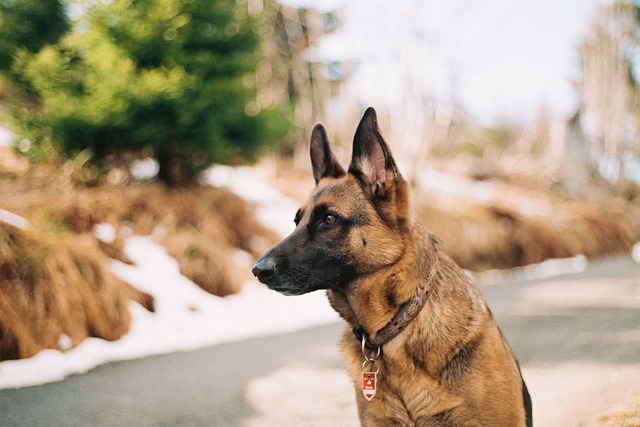Short-haired German Shepherds are one of the smartest dog breeds around and make great companions for dedicated owners. These powerful dogs grow quite tall – males reach 24 to 26 inches at the shoulder, while females stand 22 to 24 inches. Their outer coat stays between 1 to 2 inches long, which gives them natural protection and needs less grooming than their long-haired relatives.
These energetic dogs need 1-2 hours of daily exercise to burn off their high energy. They adapt well to warm climates and shed less than standard German Shepherds, which makes them a great fit for active families. This piece walks you through detailed care tips from experienced breeders that will help you take better care of your current companion or prepare you to welcome a new short-haired German Shepherd into your family.
The Short-Haired German Shepherd Advantage
A short-haired German Shepherd stands out from other German Shepherds with its sleek look. Their unique coat brings several benefits that work well with different lifestyles and environments.
Comparing short vs. long-haired German Shepherds
Short-haired German Shepherds have a thick double coat. The outer layer grows about. Their shorter coat lies flat against their body and creates an athletic look that shows off their muscular build.1-2 inches long
Short-haired German Shepherds make grooming much easier:
- Grooming frequency: You’ll only need to brush short-haired GSDs once or twice a week. Long-haired ones just need more attention to avoid matting
- Shedding management: Both types shed with the seasons, but short hair is easier to clean up and less visible in your home
- Cleanliness: Less dirt and debris get stuck in the shorter coat during outdoor play
Both coat types come with similar temperaments and personality traits. The experts at Wustenbergerland say it best: “Ultimately, either type makes a beautiful, loyal addition to the right home”.
Climate adaptability factors
Short-haired German Shepherds adapt well to different climates. Their coat helps them handle both hot and cold weather, though they do better in warmer places.
These dogs handle warm weather well because of how their coat works. The outer layer bounces sunlight away while the undercoat keeps them insulated from heat. This helps them stay comfortable even when temperatures rise.
They can handle cold weather too, with some limits. You might want to get them a dog coat for really cold days. Their natural coat works fine for normal winter temperatures.
Activity level considerations
Short-haired German Shepherds have amazing energy that makes them great for active families. These working dogs thrive on exercise and mental challenges.
These dogs just need 1-2 hours of daily exercise to stay healthy and happy. They might start digging or barking too much if they don’t get enough activity.
Their high energy makes them perfect for:
- Police and military work
- Search and rescue operations
- High-intensity training activities
- Active households with regular outdoor time
Short-haired German Shepherds excel at demanding jobs because their easy-care coat lets them focus on work instead of grooming. Their strong, athletic build helps them stay agile and powerful, which makes them great working partners.
These dogs can live happily in apartments too, as long as they get their exercise. They learn quickly and adapt well, which makes them great companions no matter where you live.
Short Haired German Shepherd Puppies

A short-haired German Shepherd puppy will bring endless playful moments and training opportunities to your home. These energetic bundles grow into confident, loyal companions with the right care and guidance.
Physical traits of short-haired GSD puppies
Short-haired German Shepherd puppies weigh 1-2 pounds at birth and grow faster in their first weeks. These puppies look mostly black when born, and tan markings develop as they age. Their floppy ears start standing upright between 8-16 weeks.
You’ll notice their distinctive short coat around 8-10 weeks. The soft, fuzzy texture changes into a weather-resistant adult coat. Short-haired GSD puppies have a more defined outline than their long-haired siblings even as youngsters.
Color variations include:
- Black and tan (most common)
- Solid black
- Sable
- White (less common)
- Black and red
A short hair German Shepherd puppy weighs between 35-40 pounds by 16 weeks. Their powerful build becomes obvious, though they stay lanky until 6-8 months when muscles develop more.
Early development milestones
Short-haired German Shepherd puppies develop quickly in body and mind. The critical socialization period happens between weeks 3-12. Meeting different people, animals, and environments shapes their future personality.
Puppies become curious about their world at 8 weeks and bond with their human family. Their confidence and physical coordination improve between 12-16 weeks. This makes it the perfect time to start simple obedience training with positive reinforcement.
Teething starts around 12 weeks and lasts until 6 months. Their chewing instinct gets stronger during this time. Good chew toys protect your belongings and help their dental health.
Puppy-proofing your home
Your living space needs a good check before your short-haired German Shepherd puppy arrives. These smart, curious puppies explore everything with their mouths. Keep electrical cords, household chemicals, and small objects out of reach.
Set up a puppy zone with baby gates or an exercise pen for times when you can’t watch them. This area needs:
- A cozy bed or crate
- Fresh water is always available
- Good chew toys
- Potty pads if needed
Short-haired GSDs still leave fur around your home. Good cleaning tools and regular hoovering help manage the fur. These active puppies need play space, so move breakable items from low tables and shelves.
Let your short-haired German Shepherd puppy explore different parts of your home bit by bit. Clear boundaries from day one help set expectations while they satisfy their natural curiosity safely.
Essential Care for Young Short-Haired Shepherds
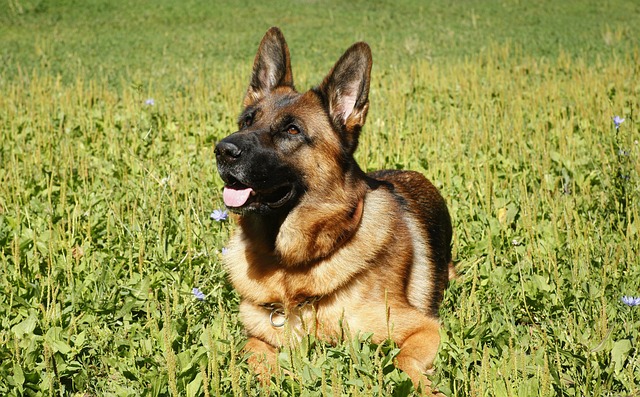
Your puppy’s first year builds the foundation for a healthy short haired German Shepherd’s life. The way you care for your puppy now will shape their future wellbeing.
Nutrition fundamentals for growing puppies
Short-haired German Shepherd puppies need animal sources like chicken, lamb, turkey, or fish. This protein helps build muscles and supports overall growth. high-quality proteinHealthy fats, especially omega-3 and omega-6 fatty acids, help develop their brain and keep their coat healthy.
The right balance of calcium and phosphorus helps bones develop properly. Breeders say your GSD’s diet affects how much they shed by a lot. You should pick high-quality commercial puppy food made for large breeds or talk to your vet about making food at home.
Vaccination and preventative care schedule
Your short-haired German Shepherd needs these vaccines to stay healthy:
- 6-8 weeks: First DHPP vaccines (distemper, hepatitis, parainfluenza, parvovirus)
- 10-12 weeks: Second DHPP vaccines plus first Bordetella (kennel cough)
- 14-16 weeks: Third DHPP vaccines, rabies, and leptospirosis
- 1 year: Booster shots, then every 3 years for core vaccines
Puppies need deworming at 2, 4, 6, and 8 weeks. Many vets suggest titer testing before boosters to check if your dog really needs more vaccines.
Early socialization techniques
Short-haired German Shepherd puppies must be socialized before they reach 12-16 weeks. Puppies who meet lots of people and animals early become friendly, well-adjusted adults.
Start socializing your 8-12 week old puppy with different places, people, and friendly animals. Getting them used to grooming tools and being handled helps make routine care easier later.
Establishing grooming routines
Your short haired German Shepherd puppy needs brushing 2-3 times each week to control shedding. Bathe them every 2-3 months with gentle puppy shampoo that won’t strip their coat’s natural oils.
Clean their ears weekly with hypoallergenic baby wipes to prevent infections. Cut their nails every 3-4 weeks, and start touching their paws early so they get used to it. Brush their teeth 2-3 times weekly with dog toothpaste to stop tartar buildup and create good habits.
Adult Short Haired German Shepherd Maintenance
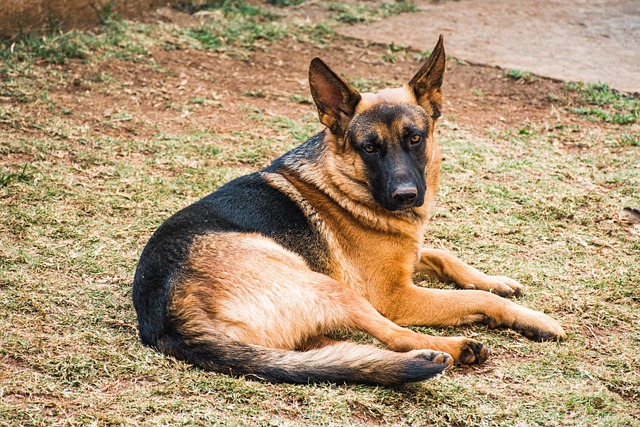
Adult short-haired German Shepherds need special care with their nutrition, activity, and grooming routines. This helps them stay healthy and happy throughout their adult life.
Diet and exercise balance
Adult short-haired German Shepherds need a well-balanced diet that matches how active they are. Active dogs should eat between meals daily. Older or less active shepherds do well with 1272-1540 calories. Watching their calorie intake helps prevent weight gain that could hurt their joints.1740-2100 calories
Your adult GSD’s food should contain at least 18% protein and 5% fat. Whole meat protein like chicken, beef, or fish must be the first ingredient. The food should also list carbohydrates, grains, and vegetables in decreasing amounts.
These energetic dogs need at least 45 minutes of exercise daily, split into several sessions. Most short-haired German Shepherds do best with 1-2 hours of daily physical activity. This helps keep their muscles strong and joints healthy. These dogs were bred to work, so they might destroy things around the house if they don’t get enough exercise.
Mental stimulation needs
Short-haired German Shepherds need mental challenges just as much as physical exercise. These smart dogs love activities that test their problem-solving skills and instincts.
Here are some great mental enrichment activities:
- Puzzle toys that make them work to get treats
- Brain training games that build your bond and challenge your mind
- Scenting games that make use of their natural hunting skills
- Hide and seek activities that tap into their 225 scent receptors
Mental stimulation is a vital part of their daily routine. It helps prevent behavior issues like too much barking, digging, or chewing things up. Daily brain work keeps your short-haired GSD happy and well-behaved.
Coat care through the seasons
Short-haired German Shepherds need less grooming than their long-haired cousins, but regular care matters. Brush them weekly to remove loose fur and keep their coat healthy. You’ll need to brush more often during shedding season.
Give your short-haired GSD a bath only when needed – usually once a month or if they get dirty. Too many baths can strip their coat’s natural oils and cause skin problems. Good nutrition with essential fatty acids works better to keep their coat healthy.
During shedding seasons, brush your dog outside with a de-shedding tool. This helps manage all the loose fur. Never shave your short-haired German Shepherd – their double coat naturally protects them from both hot and cold weather.
Health Monitoring for Short-Haired German Shepherds
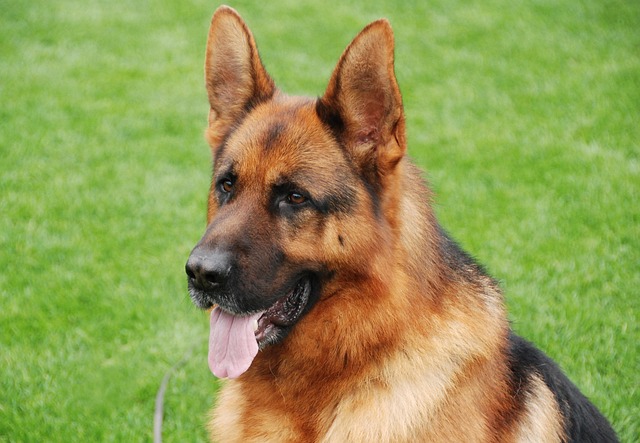
Your short-haired German Shepherd’s health monitoring is vital to their longevity. These dogs typically live 9-13 years, and good health management can make a real difference in both their quality and length of life.
Common health concerns
Short-haired German Shepherds need special attention due to several breed-specific health challenges. of German Shepherds and causes joint pain that limits mobility. These conditions often result in arthritis as your dog gets older. Hip and elbow dysplasia affects about 20%
Degenerative myelopathy (DM) poses a serious neurological threat that weakens the hind limbs and can lead to paralysis. Your dog might also develop exocrine pancreatic insufficiency (EPI) when their pancreas doesn’t make enough digestive enzymes. This causes malnutrition and weight loss even though they eat more than usual.
Gastric dilatation-volvulus (bloat) can be life-threatening because the stomach twists itself. You’ll need emergency vet care right away. Allergies are also common in short-haired GSDs and can show up as skin irritation, ear infections, or digestive problems.
Preventative care strategies
Regular vet check-ups are the lifeblood of your short-haired German Shepherd’s preventative health care. Yearly wellness exams help catch potential issues early.
The right weight helps protect your dog’s joints and prevents obesity-related problems. Joint supplements with omega-3 fatty acids can reduce inflammation and support joint health. This is especially important for German Shepherds.
Genetic testing before breeding reduces hereditary conditions in future generations. Pet owners who understand their dog’s genetic makeup can better manage potential health issues.
When to contact your veterinarian
Call your vet immediately if your short-haired German Shepherd shows:
- Distended abdomen, restlessness, unproductive vomiting (signs of bloat)
- Sudden hind leg weakness or dragging (possible neurological issue)
- Labored breathing or collapse
- Excessive thirst that lasts more than a day
- Sudden aggression or behavioral changes
Watch for subtle changes too: less activity, avoiding stairs, weight loss despite normal eating, or frequent scratching. Quick action often means better outcomes and lower treatment costs.
Senior Short Haired GSD Special Considerations
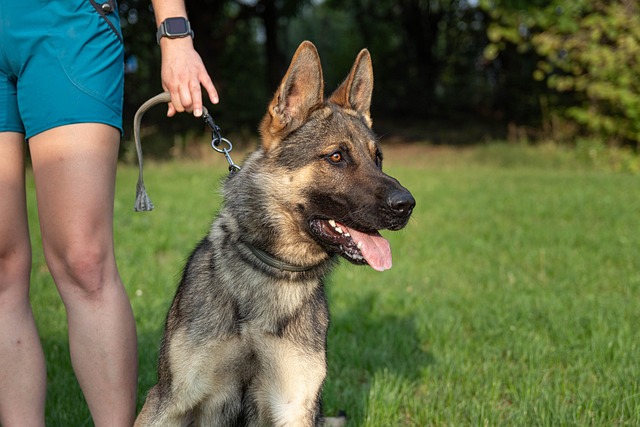
Your short-haired German Shepherd’s golden years start around age 7. You’ll notice gradual changes in how they look, behave, and move. These loyal friends become even more gentle and loving with age. They need some changes in their care routine.
Adapting care for aging dogs
Senior short-haired GSDs go through several age-related changes that need your attention. Watch for subtle signs like:
- Gray hair around the muzzle
- Less stamina and activity
- Different sleep patterns and rest needs
- Poor concentration or confusion
- Higher sensitivity to changes around them
- More bathroom breaks are needed
Senior dogs do well with regular activity but need changes that match their abilities. Make daily walks shorter while keeping the routine—your short-haired German Shepherd still loves this time with you. Swimming is a great low-impact option that helps sore joints and keeps them active.
Their metabolism slows down and changes their nutritional needs. Senior food formulas have fewer calories, more fiber, and concentrated nutrients to help with decreased absorption. Your dog’s weight needs close monitoring because extra pounds make joint problems worse.
Joint health management
Joint health becomes crucial for senior short-haired shepherds. Hip dysplasia makes hip joints fit poorly in their sockets and causes pain. Degenerative myelopathy affects the spinal cord and leads to mobility issues.
Here’s how to take care of their joints:
- Keep their weight ideal to reduce joint pressure
- Give them joint supplements with glucosamine, chondroitin, and collagen
- Add omega-3 fatty acids to fight inflammation
- Talk to your vet about pain management options
Maintaining quality of life
Your senior short-haired German Shepherd needs a comfortable environment. Get them an orthopedic bed that supports their aging joints. Ramps help them climb stairs or get into cars. Non-slip yoga mats prevent slipping on tile or wood floors.
Mental exercise stays important—teach them new tricks to keep their mind sharp. Physical abilities might decrease, but brain games help maintain mental fitness. Puzzle toys and interactive feeders are great ways to enrich their daily routine.
These golden years need special care and attention. Every moment with your short-haired companion becomes more precious as you help them live their senior years comfortably and with dignity.
Conclusion
Short-haired German Shepherds are remarkable companions. Their manageable coat provides distinct advantages while preserving the breed’s legendary intelligence and loyalty. These adaptable dogs make excellent partners in many lifestyles, but they do best with dedicated owners who understand their needs.
Taking care of these magnificent dogs means paying attention to each life stage. From energetic puppyhood through mature adulthood to senior years, your short-haired German Shepherd needs the right balance of health monitoring, exercise and mental stimulation to enjoy a life that spans 9-13 years.
These dogs need consistent involvement, good nutrition, and preventive healthcare as they age. Their grooming needs are nowhere near as high as long-haired varieties, but regular maintenance and attention still benefit them greatly. Your dedication to understanding and meeting these needs directly affects your companion’s health, happiness, and lifespan.
Short-haired German Shepherds reward careful attention with steadfast loyalty and companionship. These intelligent and capable animals prove their worth through dedicated service, whether as working dogs or beloved family pets.
FAQs
Q1. How often should I bathe my short-haired German Shepherd?
Bathe your short-haired German Shepherd only when necessary, typically once a month or when visibly dirty. Over-bathing can strip natural oils from their coat, potentially leading to skin problems. Focus on regular brushing to maintain coat health between baths.
Q2. What are some important things to avoid when caring for a German Shepherd?
Avoid neglecting socialization, skipping regular exercise, or providing an improper diet. These can lead to behavioral issues and health problems. Also, don’t overlook mental stimulation, as German Shepherds are highly intelligent and need cognitive challenges to stay balanced.
Q3. What is the typical temperament of a short-haired German Shepherd?
Short-haired German Shepherds are known for their loyalty, intelligence, and protective instincts. They are quick learners, responsive to training, and make excellent family companions when properly socialized. Their high energy levels require regular exercise and mental stimulation.
Q4. Can German Shepherds be left alone during the day?
While German Shepherds can tolerate being alone for up to 8 hours, it’s important to provide them with mental stimulation and a comfortable environment. Consider arranging for a midday break or using interactive toys to keep them engaged. Gradually train your dog to be comfortable with alone time to prevent separation anxiety.
Q5. What kind of exercise do short-haired German Shepherds need?
Short-haired German Shepherds require substantial daily exercise, typically 1-2 hours. This should include a mix of physical activities like walks, runs, or playtime, as well as mental stimulation through training exercises or puzzle toys. Regular exercise helps maintain their physical health and prevents behavioral issues stemming from pent-up energy.
